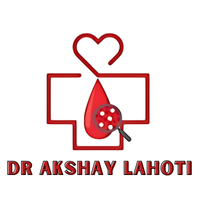Benign and Malignant Blood Diseases: What They Are and How They’re Treated

What Are Benign and Malignant Blood Diseases?
Benign Blood Diseases: These diseases affect blood cells, but they don’t spread or turn into cancer. They can still cause health problems, but they are usually not as dangerous. Some examples include anemia (poor red blood cells) and blood clotting issues.
Malignant Blood Diseases: These diseases are cancers that begin in the blood. They can grow and spread quickly, making them very dangerous if not treated. Examples include blood cancer, leukemia, and lymphoma.
Types of Blood Diseases
Blood cancer can cause several symptoms:
Anemia
This happens when body doesn’t make enough red blood cells, which carry oxygen. It can make you feel tired.
Hemophilia
A disease where the blood doesn’t clot properly, leading to too much bleeding from small cuts or bruises.
Thrombocytopenia:
This means a person doesn’t have enough platelets, which are important for blood clotting. It can cause bruising and slow healing.
Sickle Cell Anemia
A genetic disease where red blood cells are shaped like sickles (crescent moons). This can block blood flow, causing pain and other problems.
Symptoms of Blood Diseases
Symptoms can be different depending on whether a person has a benign or malignant blood disease, but some common symptoms include:
Fatigue
Feeling exhausted all the time, even when sleeping.
Bruising or Bleeding
Getting bruises easily or bleeding a lot from small cuts could mean there’s a problem with blood clotting.
Frequent Infections
If someone gets sick a lot, it could be because their immune system isn’t working properly
Swollen Lymph Nodes
Swelling in the neck, armpits, or groin might be a sign of lymphoma or other blood cancers.
Pale Skin
If someone’s skin looks pale, it might be because they don’t have enough red blood cells, which is a sign of anemia.
Bone or Joint Pain
This can happen when there’s a problem in the bone marrow, like with leukemia or multiple myeloma.
Causes of Blood Diseases
- Genetics: Some blood diseases, like sickle cell anemia and hemophilia, are passed down from parents to their children.
- Infections: Certain infections can damage the blood cells or cause the immune system to attack healthy blood cells.
- Cancerous Mutations: In malignant diseases, cells in the blood start to grow uncontrollably because of mutations (changes in DNA).
- Bone Marrow Damage: The bone marrow is where blood cells are made. Damage the bone marrow can lead to serious blood diseases.
Diagnosis and Tests for Blood Diseases
- Complete Blood Count (CBC): This test determines the quantity of red blood cells, white blood cells, and platelets in the bloodstream. It can show if there is a problem like anemia or leukemia.
- Bone Marrow Biopsy: In this test, a small sample of bone marrow is taken and looked at under a microscope. This helps doctors find out if the bone marrow is healthy or if there are cancerous cells.
- Genetic Testing: This is used to find out if a person has inherited a blood disease like sickle cell anemia.
- Blood Smear: A small drop of blood is put on a slide and examined under a microscope to check the shape and size of the blood cells.
At Medicare Hospital in Indore, Dr Akshay Lahoti and his team use these tests to diagnose and treat blood diseases.
Effects and Side Effects of Blood Diseases
Benign Blood Diseases: These diseases are usually not dangerous, but they can still cause problems. For example, anemia can make you feel tired and weak, while hemophilia can cause bleeding that is hard to stop.
Malignant Blood Diseases: These are much more serious. If not treated, they can cause life-threatening complications, such as damage to the immune system or organs. Treatments like chemotherapy and radiation can help, but they often come with side effects like nausea, hair loss, and a weakened immune system.
How Dangerous Are Blood Diseases?
Benign blood diseases like anemia are usually not life-threatening. They can be treated with medications or changes in diet. However, malignant blood diseases like leukemia and lymphoma can be very dangerous. If not treated quickly, these cancers can spread and become fatal. Dr Akshay Lahoti, a leading blood cancer doctor in Indore, specializes in treating these serious diseases
Treatment Options for Blood Diseases
- Benign Blood Diseases: Treatment for these diseases might involve taking supplements (like iron for anemia), medications, or making changes to your diet.
- Malignant Blood Diseases: These require stronger treatments, such as chemotherapy, radiation therapy, or a Bone Marrow Transplant.
A Bone Marrow Transplant replaces unhealthy bone marrow with healthy cells to help fight the disease. Dr Akshay Lahoti is an expert in Bone Marrow Transplants, having performed over 100 successful transplants.
Frequently Asked Questions
Blood diseases are diagnosed through tests such as a Complete Blood Count (CBC), bone marrow biopsy, blood smears, and genetic testing.
Generally, benign blood diseases do not become cancerous, but they can still cause health problems if not treated properly.
Treatments include chemotherapy, radiation therapy, and Bone Marrow Transplants. The specific treatment depends on the type and severity of the disease.
Yes, some blood diseases like sickle cell anemia and hemophilia are genetic and can be passed down from parents to their children.
If you notice any concerning symptoms, you should consult a hematologist. Dr Akshay Lahoti, a hematologist doctor in Indore, specializes in treating blood diseases at Medicare Hospital.
